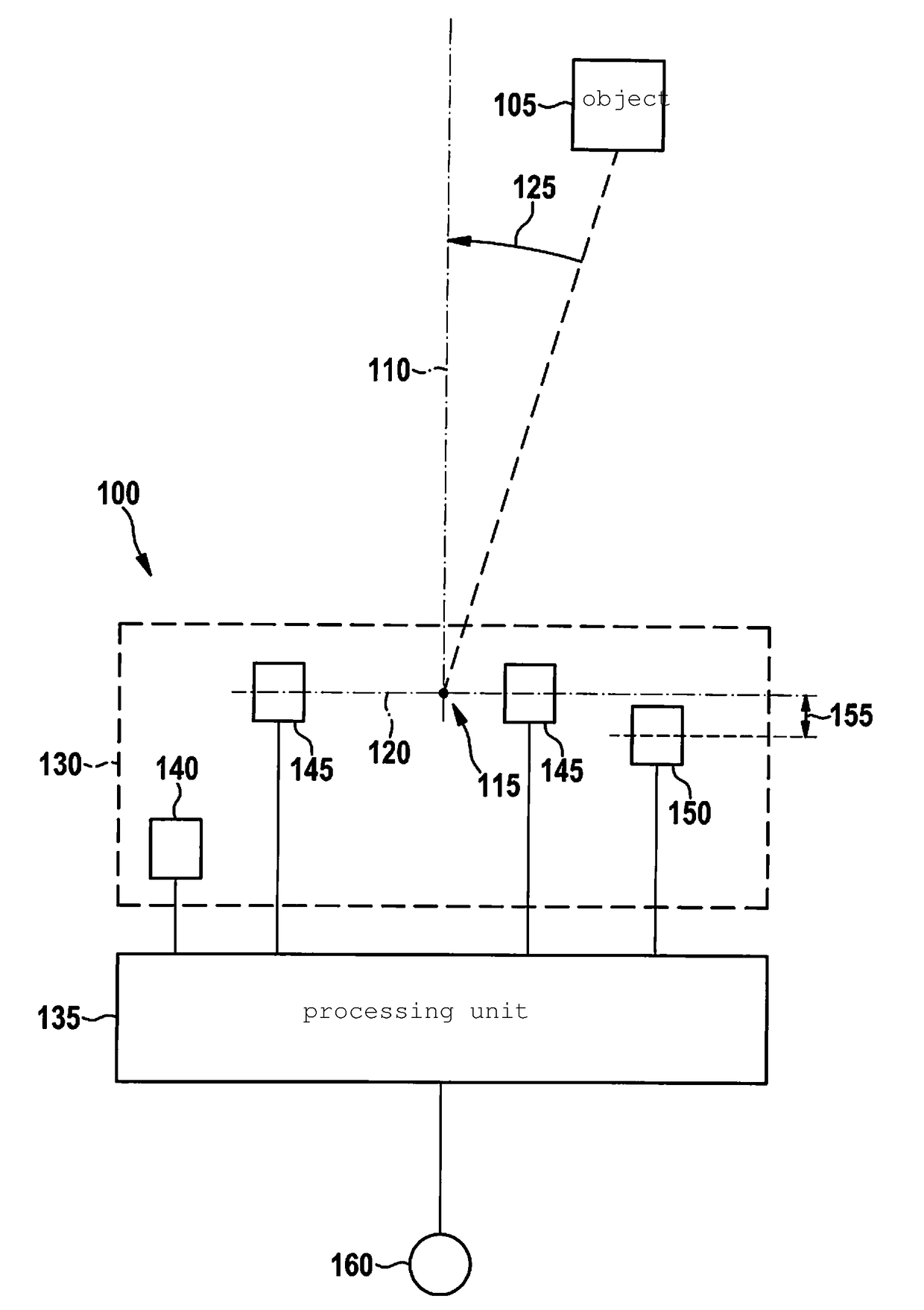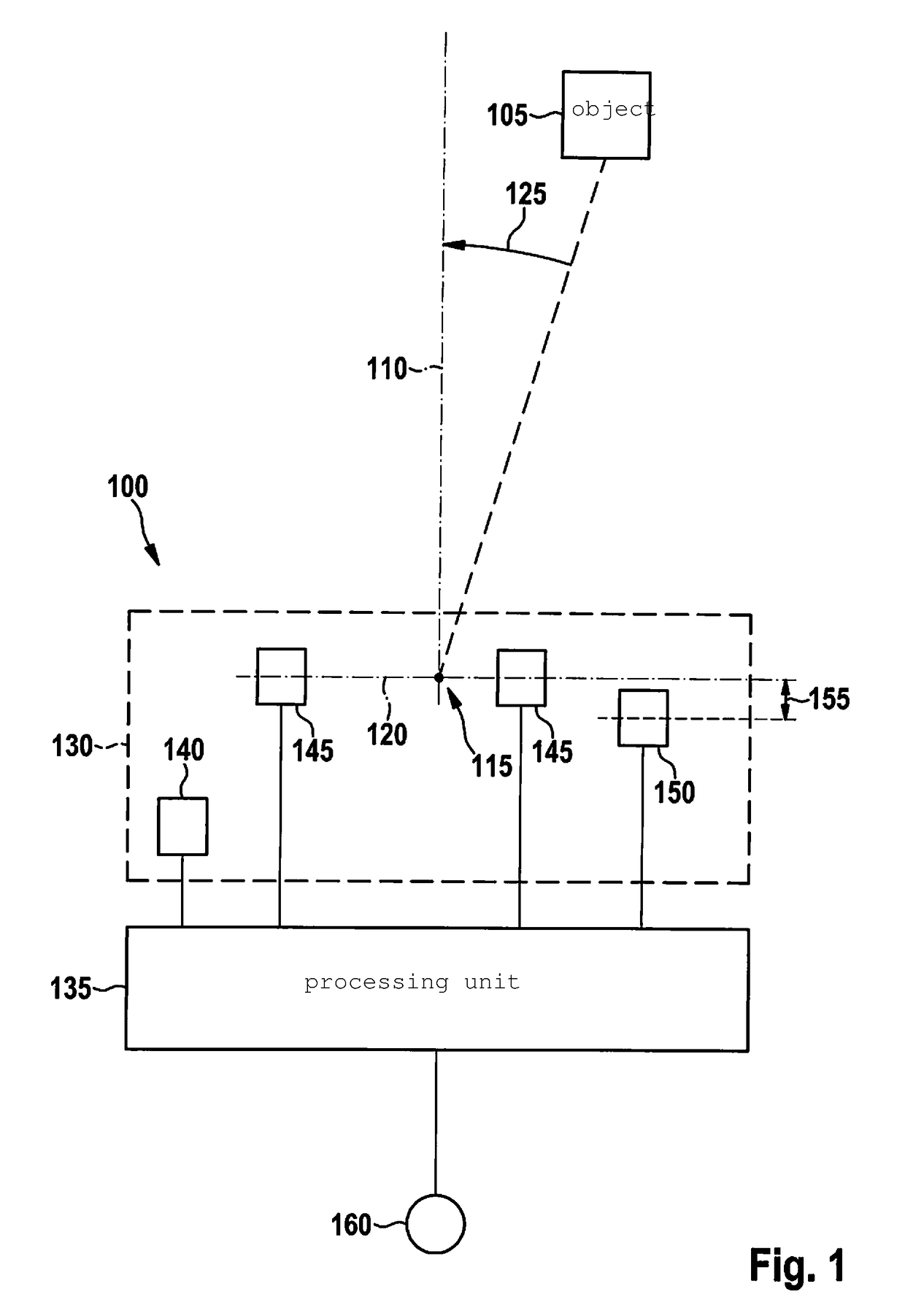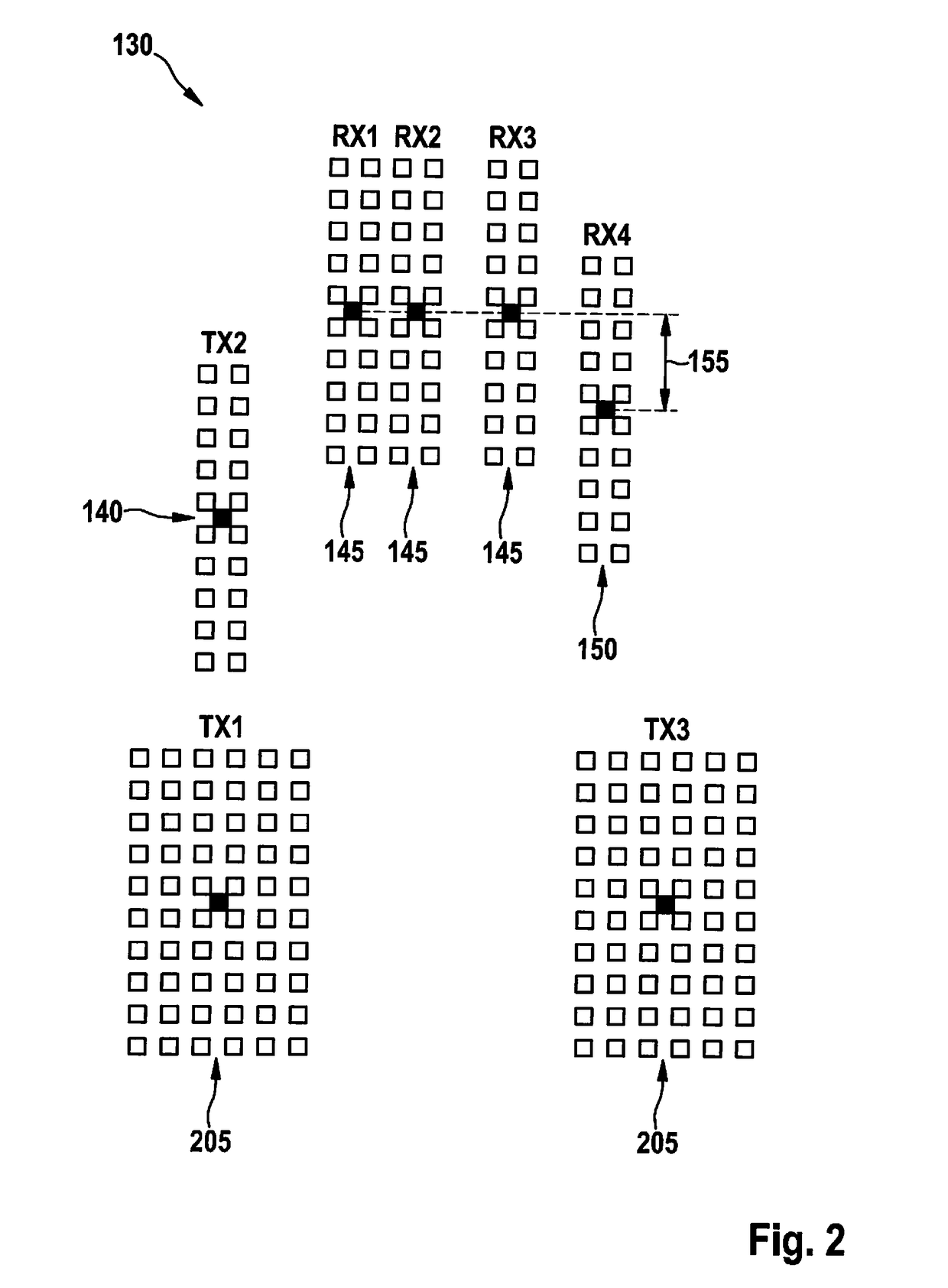Azimuth determination with the aid of a radar sensor
a radar sensor and azimuth angle technology, applied in the direction of antenna details, instruments, antennas, etc., can solve the problem that the azimuth angle may only be determined with limited accuracy and separation capability
- Summary
- Abstract
- Description
- Claims
- Application Information
AI Technical Summary
Benefits of technology
Problems solved by technology
Method used
Image
Examples
Embodiment Construction
[0026]FIG. 1 shows an exemplary radar sensor 100 which may be configured for use on a motor vehicle. With the aid of radar sensor 100, the position of an object 105 is to be detected. An elevation angle, an azimuth angle, and a distance of object 105 are thereby usually determined. In another specific embodiment, a size or a movement of object 105 may also be determined. In the following, however, merely the determination of the azimuth angle of object 105 is described in greater detail. A coordinate system is assumed for this purpose which is extended with respect to the motor vehicle. The coordinate system includes a longitudinal axis 110, a vertical axis 115, and a transverse axis 120 which intersect at a shared point and in pairs with one another describe angles of 90°. An azimuth angle 125 of object 105 is indicated by way of example in FIG. 1.
[0027]Radar sensor 100 includes, for example, an arrangement 130 and a processing unit 135. Antenna arrangement 130 generally includes a...
PUM
 Login to View More
Login to View More Abstract
Description
Claims
Application Information
 Login to View More
Login to View More - R&D
- Intellectual Property
- Life Sciences
- Materials
- Tech Scout
- Unparalleled Data Quality
- Higher Quality Content
- 60% Fewer Hallucinations
Browse by: Latest US Patents, China's latest patents, Technical Efficacy Thesaurus, Application Domain, Technology Topic, Popular Technical Reports.
© 2025 PatSnap. All rights reserved.Legal|Privacy policy|Modern Slavery Act Transparency Statement|Sitemap|About US| Contact US: help@patsnap.com



